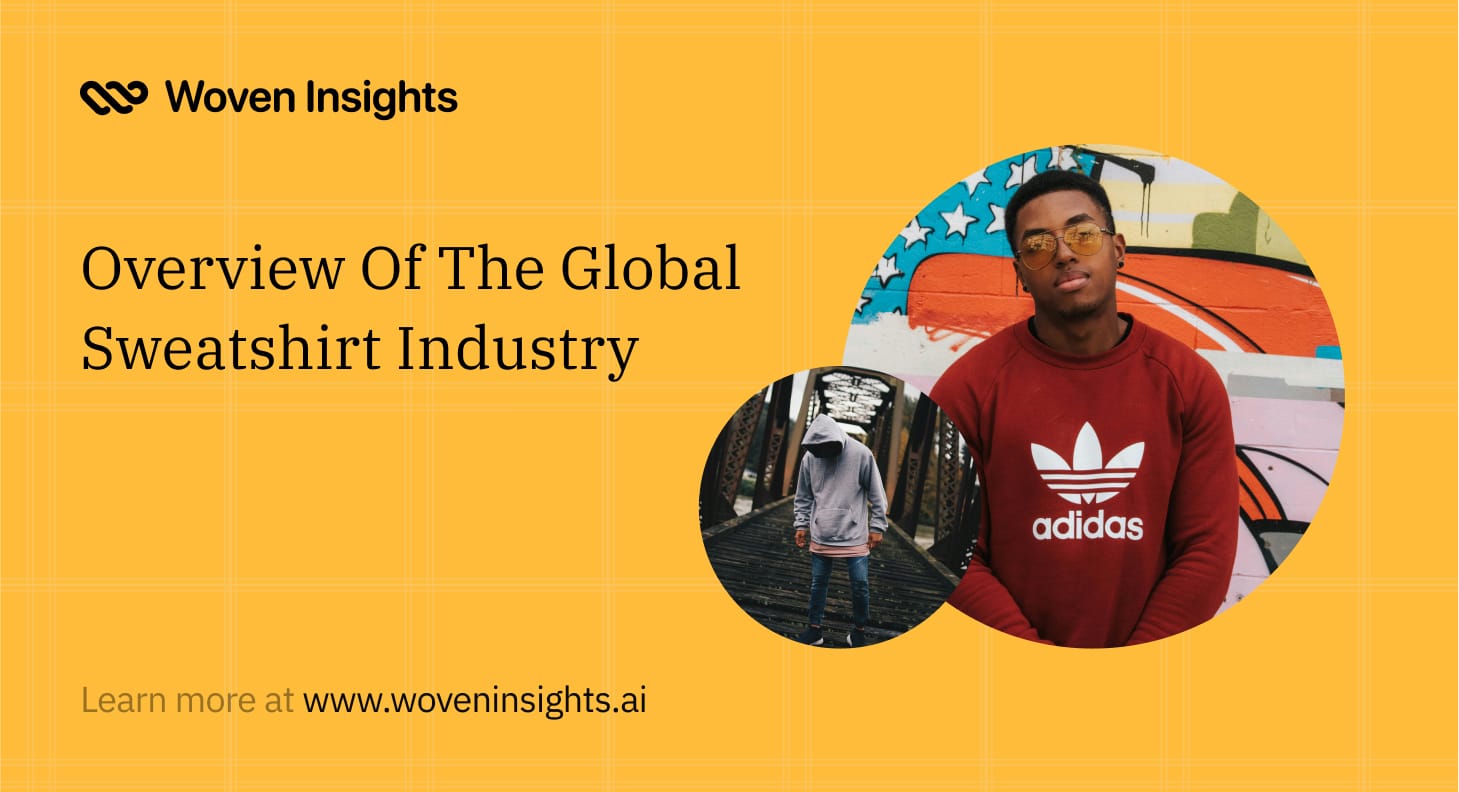Overview Of The Global Sweatshirt Industry
The global sweatshirt market is valued at almost 30 billion dollars, and is forecasted to grow to $33b by the early 2030'2

Originally designed as athletic wear, sweatshirts have become an everyday staple in casual fashion. The modern sweatshirt traces its origins back to the 1920s when Benjamin Russell Jr. - a college football quarterback - suggested a comfortable alternative to the itchy wool uniforms then used in sports. Working with his father, who owned a clothing manufacturing company, the first sweatshirts were created as loose, collarless pullovers.
This innovation gave rise to what later became known as the Russell Athletic Company and spurred the sweatshirt’s evolution from a sports-specific garment into a versatile piece of casual attire.
The sweatshirt’s cultural ascent began in the 1970s and 1980s. It became a canvas for rebellion—adopted by hip-hop artists, skateboarders, and punk subcultures—and later a luxury statement, with brands like Gucci and Balenciaga reimagining it in premium fabrics.
Today, it bridges streetwear, high fashion, and loungewear, embodying a paradox: it is both a uniform of anonymity and a tool for personal branding.
The Global Sweatshirt Market Size
The global sweatshirt market has experienced robust growth over recent years. Recent reports suggest that the market was valued at approximately USD 19–20 billion in 2023. Projections from various market research firms indicate significant expansion over the coming years - with some analyses forecasting the market could reach anywhere between USD 28 billion and USD 33 billion by the early 2030's.
Growth rates vary by study, with some predicting a compound annual growth rate (CAGR) in the range of 6%–10%, reflecting both increasing consumer demand for comfortable, athleisure-oriented clothing and continuous product innovation.
Key drivers of this growth, as well as growing trends, in the sweatshirt industry include:
- Fashion Sustainability initiatives, as brands pivot to eco-friendly materials and practices like organic cotton, recycled polyester, waterless dyeing, rentals and resale platforms.
- The athleisure trend, bolstered by celebrity endorsements and social media influence, cementing the sweatshirt’s role in everyday fashion.
- Tech-Infused Design manifesting in heated sweatshirts, moisture-wicking fabrics, and QR code-linked apparel blurring fashion and functionality.
- Hyper-Personalization, where direct-to-consumer brands (e.g., Bombas, Rhone) offer custom embroidery, fit algorithms, and crowd-sourced designs.
- Gender-Neutral Fashion, allowing unisex sweatshirts cater to Gen Z’s demand for inclusivity, with oversized fits and minimalist aesthetics.
- Nostalgia Marketing, with vintage logos (e.g., Nike’s “vintage wash” collections) and Y2K-inspired graphics tap into millennial and Gen Z nostalgia.
- Post-pandemic demand for hybrid work attire and loungewear.
- Streetwear’s dominance in youth culture, amplified by social media.
Leading Regional Markets: Where Sweatshirts Rule
The sweatshirt’s appeal is global, but three regions dominate retail sales:
- North America: The largest market (40% share), driven by the U.S.’s obsession with athleisure and streetwear. Brands like Nike, Supreme, and Lululemon leverage celebrity collaborations and limited drops.
- Europe: A hub for luxury reinterpretations, with France, Italy, and the UK leading. Sustainability regulations (e.g., EU’s Circular Economy Action Plan) push innovation in recycled fabrics.
- Asia-Pacific: The fastest-growing region, spurred by rising disposable incomes in China and India, and South Korea’s K-pop fashion influence. E-commerce platforms like Alibaba and Shein democratize access.
Beyond The Hoodie: A Look At The Future
Looking ahead, the global sweatshirt market is poised for continued expansion. Future growth will likely be driven by the following factors:
- Innovative Design and Technology: Manufacturers are expected to invest in research and development to produce sweatshirts that integrate advanced fabric technologies, improved thermal insulation, and enhanced durability—without compromising comfort.
- Expanding Consumer Base: As the influence of athleisure and casual wear penetrates deeper into emerging markets, brands will have the opportunity to tap into new consumer segments. This is particularly evident in the Asia Pacific and Latin American regions, where rising disposable incomes and evolving lifestyles are driving demand.
- Sustainability as a Competitive Edge: Brands that prioritize ethical production and eco-friendly materials are likely to secure a competitive advantage. With increasing regulatory pressure and growing consumer awareness, sustainability will become even more integral to market strategy.
- Digital and Omnichannel Retail Strategies: The growth of online retail is expected to persist, further supported by omnichannel approaches that integrate physical stores with digital platforms. Enhanced customer experiences through virtual try-ons and personalized recommendations will also contribute to sustained market growth.
About Woven Insights
Imagine if you had access to real-time in-depth fashion retail market and consumer insights, from more than 70 million real shoppers and 20+ million analyzed fashion items from global fashion brands.
That's basically what Woven Insights offers fashion brands, manufacturers and research teams of all sizes - with the best pricing in the industry.
Introducing Woven Insights
Woven Insights provides you with all the actionable data you need to create fashion products that are truly market-ready and consumer-aligned.
Click on the Book a demo button below to get started today.

